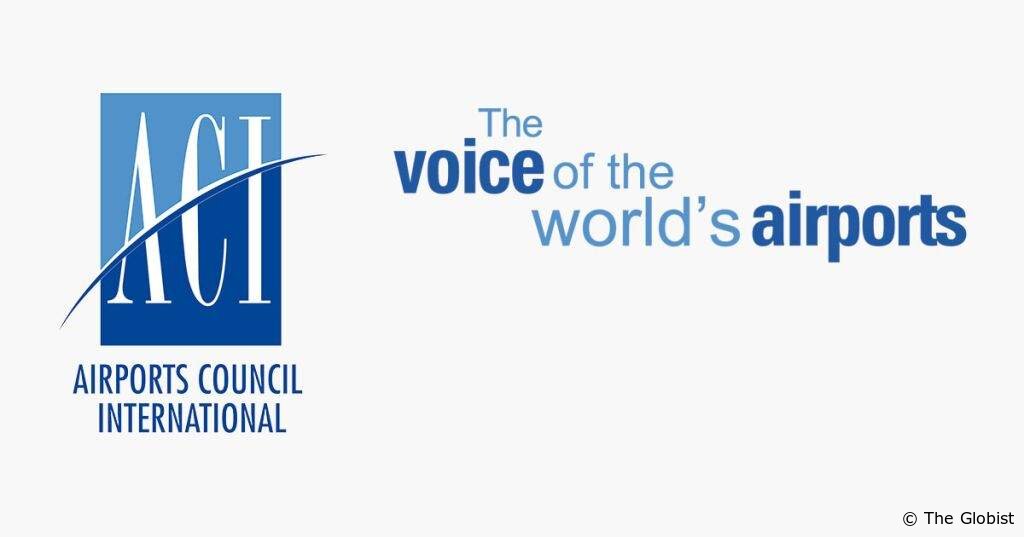Passenger traffic growth continues but cargo momentum slows amid global uncertainty and increased protectionism

Airports Council International (ACI) World reported a 7.2% increase in global passenger traffic in June on a year-over-year basis. While the year-to-date growth of 6.6% represented a slight slowdown from a particularly strong first quarter in 2018, the figure was still in line with 2017’s robust growth rate, which had also stood at close to 7% at the same time.
ACI’s month-by-month passenger and freight statistics are based on a significant sample of airports that provide regular reports and form part of the world’s most comprehensive source for airport data.
Freight volumes slowed to just +2.3% increase on a year-over-year basis in June, bringing the year-to-date growth figure to +4.8%. The month’s year-to-date was more than three percentage points lower than the same period in 2017, and monthly growth rates have been trending downwards since January.
The two main regional markets for air freight – Asia-Pacific for its international segment and North America for its domestic segment – may be headed towards slower growth given the ongoing trade war between their two largest economies, the United States and China.
“While ACI has found that passenger traffic has continued to grow at a robust rate, the threat of increased economic uncertainty continues to loom over the air transport industry,” said Angela Gittens, Director General, ACI World. “With the volatility around increased protectionism between major trading nations set to continue to the end of 2018, these barriers to free trade could stifle the flow of cargo even further.
“A stronger commitment to partnership and cooperation is needed to achieve increased growth, not only in cargo but also in passenger volumes, so the benefits of aviation and global connectivity can be realized by the local, regional and national communities that aviation and, in particular, airports serve.”
Passenger traffic
Both domestic and international segments contributed to June’s growth in passenger traffic, though the international traffic remained the main driver for the industry. Year-to-date figures stood at +7.3% for international passengers during the period, compared to the domestic segment’s +5.9%. The international segment has grown nearly twice as fast as the domestic segment, at +8.9% and +4.9% respectively.
While most of the passenger traffic increase was fuelled by Europe and Asia-Pacific in the first half of 2017, North America has been growing steadily in 2018. On a year-to-date basis, Asia-Pacific was ahead of the two other regions, up 8.6% during the period. Europe and North America followed, posting +6.7% and +5.2% respectively.
Despite challenges related to global macroeconomic trends, Africa and Latin America-Caribbean have fared relatively well during the period, with growth rates of 11.2% and 4.4% respectively. Supported by gradual recoveries in some of their largest economies, both regions had posted comparatively more modest growth rates in 2017 and have been picking up speed in the first half of the year. However, their capacity to invigorate growth in the global aviation industry will remain limited in the medium-term, given the relative size of these regional markets compared to other regions.
The Middle East was an outlier in the first half of 2018, reaching a 0.7% increase in passenger traffic for the period, nearly a full six percentage points below the global average, and five below its 2017 growth rate. Modest growth in commodity and oil prices should make the 2018 macroeconomic context more difficult for the region, which is still dependent on the commodities market for exports, despite commendable economic diversification efforts. Most importantly, numerous diplomatic crises have led to an increase in tensions in the region, which have been dragging on the industry’s growth.
Freight volumes
With adverse trends in trade relations and heightened geopolitical tensions, the odds are not good of 2018 repeating the growth figures recorded in 2017. The 12-month rolling averages for the market have been on a steady decline in recent months, reaching +6% in June, from +8% in January.
Africa’s air freight volumes posted an increase of 12.7% on a year-to-date basis in June, with most of the region’s major contributors posting double-digit growth. Although the market remains the smallest in the six regions, it has been posting more robust growth figures in the last 12 months and is in the right track to end 2018 with a stronger growth trend than in 2017, where it had grown 7.7%.
Like other regions, Asia-Pacific’s air freight market has been showing signs of a slight slowdown through the first half of the year. June figures for the region reached +4.4% on a year-to-date basis, after growing 8.6% in 2017. Given the global context, the region is showing significant resilience to shocks. Asia-Pacific is the world’s largest international air freight market, representing close to 40% of total global volume.
Europe’s air freight market grew by 3.7% on a year-to-date basis for the first half of 2018. It should be noted that the region’s June 2017 year-to-date figures were particularly strong, exacerbating the relatively modest growth figures posted by the region during the period.
After several years of stagnation, air freight volumes in Latin-America-Caribbean have regained momentum in the first six month of 2018. Year-to-date figures for the region stood at +10.6%, with both its domestic and international segments growing at a similar pace.
The Middle East, home to several of the world’s largest international aviation hubs, has experienced no gains in freight volumes for the first half of 2018. Year-over-year decline reached -1.2% in June, down from May’s -0.9%. There is no question that the freight market is suffering from the current regional climate.
Air freight volumes for North American airports grew by 5.7% in the first half of the year. June brought with it a significant slow-down, however, with the region posting +1.7% year-over-year (down from +8.6% in May), dragging its year-to-date figure to +5.7%.
Notes for editors
- Airports Council International (ACI), the trade association of the world’s airports, was founded in 1991 with the objective of fostering cooperation among its member airports and other partners in world aviation, including the International Civil Aviation Organization, the International Air Transport Association and the Civil Air Navigation Services Organization. In representing the best interests of airports during key phases of policy development, ACI makes a significant contribution toward ensuring a global air transport system that is safe, secure, efficient and environmentally sustainable. As of January 2018, ACI serves 641 members operating 1953 airports in 176 countries.
- PaxFlash and FreightFlash statistics are based on a significant sample of airports that provide regular monthly reports to ACI. They represent approximately 60% of total passenger traffic and 70% of total freight traffic worldwide. Commentary, tables and charts are based on preliminary data submitted by participating airports and are therefore subject to change.
- Regional results are provided on the following pages.
Charts and tables
TABLE 1: SUMMARY WORLDWIDE TRAFFIC RESULTS, JUNE 2018 (% CHANGE)
June 2018 over June 2017Year to date 201812-month rolling year
PaxFlash
International passenger8.77.37.6
Domestic passenger5.95.95.4
Total passenger7.26.66.4
FreightFlash
International freight1.94.46.5
Domestic freight35.64.9
Total freight2.34.86
TABLE 2: PaxFlash summary – June 2018
RegionsJune 2018 % YOYYTD June 2018 % YOYYE thru June 2018 % YOY
International passengers
Africa18.912.711.7
Asia-Pacific10.79.29.1
Europe87.38.2
Latin America-Caribbean3.465.9
Middle East9.10.81.8
North America7.36.35.5
World8.77.37.6
Domestic passengers
Africa10.78.26.3
Asia-Pacific9.18.37.5
Europe3.44.95.6
Latin America-Caribbean2.63.63.5
Middle East………
North America5.354.2
World5.95.95.4
Total passengers
Africa16.211.29.9
Asia-Pacific9.78.68.1
Europe6.86.77.5
Latin America-Caribbean2.74.44.2
Middle East8.50.71.7
North America5.65.24.4
World7.26.66.4
Traffic table definitions:
PASSENGER TRAFFIC: departing + arriving passengers
INTERNATIONAL: traffic performed between the designated airport and an airport in another country/territory
DOMESTIC: traffic performed between two airports located in the same country/territory
TOTAL: international + domestic passengers + direct transit passengers counted once (when breakdown is available)
Year-over-year percentage changes (% YOY) are calculated from a representative sample.
YOY: Year-over-year same month comparison
YTD: Year to date, starting Jan 2018, compared to same period in previous year
YE: Year end, based on a rolling 12-month period, compared to the same prior 12-month period
TABLE 3: FreightFlash summary - June 2018
RegionsJune 2018 % YOYYTD June 2018 % YOYYE thru June 2018 % YOY
International freight
Africa.........
Asia-Pacific1.24.37
Europe2.446.4
Latin America-Caribbean6.710.59.2
Middle East(1.2)0.33.1
North America14.66.1
World1.94.46.5
Domestic freight
Africa.........
Asia-Pacific5.54.62.5
Europe(4.5)(0.4)1.8
Latin America-Caribbean9.510.97
Middle East.........
North America1.56.16.3
World35.64.9
Total freight
Africa17.912.711.8
Asia-Pacific2.34.45.8
Europe23.76.1
Latin America-Caribbean7.510.68.5
Middle East(1.2)0.23
North America1.75.76.2
World2.34.86
Traffic table definitions:
FREIGHT TRAFFIC: loaded and unloaded freight; data in metric tonnes
INTERNATIONAL: traffic performed between the designated airport and an airport in another country/territory
DOMESTIC: traffic performed between two airports located in the same country/territory
TOTAL: international + domestic freight (when breakdown is available)
Note: No domestic freight traffic is reported by airports in the Middle East and Africa regions.
Year-over-year percentage changes (% YOY) are calculated from a representative sample.
YOY: Year-over-year same month comparison
YTD: Year to date, starting Jan 2018, compared to same period in previous year
YE: Year end, based on a rolling 12-month period, compared to same prior 12-month period









